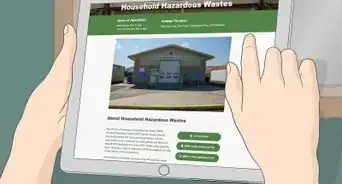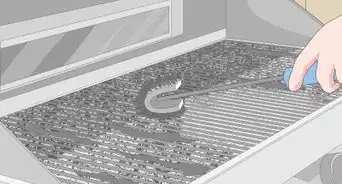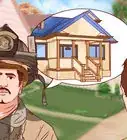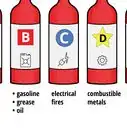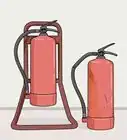This article was co-authored by wikiHow Staff. Our trained team of editors and researchers validate articles for accuracy and comprehensiveness. wikiHow's Content Management Team carefully monitors the work from our editorial staff to ensure that each article is backed by trusted research and meets our high quality standards.
wikiHow marks an article as reader-approved once it receives enough positive feedback. In this case, 86% of readers who voted found the article helpful, earning it our reader-approved status.
This article has been viewed 120,215 times.
Learn more...
Being prepared, having a plan, and practicing that plan are essential to escaping a fire. Craft your plan by taking into account your home’s particular layout and your household’s members. Think ahead, and know what to do in any location you frequent, live, or visit. Learn general escape solutions, and familiarize yourself with more specific procedures, whether you live in a single family home, a high rise apartment, are staying at a hotel, or work in a tall building. If you are a frequent hiker or camper, learn how to track smoke and plot your route in case you need to escape a wildfire outdoors.
Steps
Escaping a Structure Fire
-
1Be prepared. The best way to survive a fire is to prepare for the worst. If at home, make sure that you have properly functioning smoke detectors and that you develop life-saving habits like closing all the doors in your home before you sleep or disconnecting appliances with heating elements to avoiding a fire. If at work or at school, make sure that your building is up to fire code. If you suspect violations in your workplace or your apartment, contact your city's fire inspector.
- Participate in fire drills, as mandated by building code. Fire drills are practiced at workplaces, schools, and universities, multiple times a year, to ensure that everyone knows what to do in the event of an emergency. In numerous states, public and private schools are required to conduct monthly fire drills, and other structures are required to conduct quarterly fire drills. These can save lives.
-
2Know what your alarm sounds like. In much of North America and East Asia, smoke and fire alarms will perform three blasts, whoops, chimes, or beeps, followed by a brief pause, and then repeat. Depending on the structure and location, you may also hear an audible announcement from your smoke detector "Fire! Fire!" or from the building's public address system, indicating the location of the fire, who should evacuate, and who should remain in place. In other parts, you may hear one continuous wail or ringing coming from the fire alarm system until the alarm is silenced.Advertisement
-
3Report the emergency if it has not been done so already. On a building telephone, dial "operator", and on a cellular phone, dial 112 or 911. This will connect you to the fire department. State your location and the situation present.
-
4Be mindful of the evacuation of others in a high-rise building. If a fire is only reported on one or two floors, only those two floors should evacuate. Everyone else should await further instructions from fire personnel. If a total evacuation is ordered, everyone should proceed to the nearest emergency exit.
-
5Keep your keys and/or ID badges with you. These may be used to ensure that everyone is accounted for during an evacuation. This will also allow you to reenter the structure after the all clear is given.[1]
-
6Check the door for any signs of fire on the other side. First, feel the door and doorknob with the back of your hand. If it feels warm or hot, don't open it. Then, check around the door for signs of smoke or heat. If you see glowing embers or black smoke through the door, you also should not open it.
-
7Open the door slowly. Only open it far enough that you can see what is on the other side of the door. If you observe heavy smoke or flame, close the door and remain where you are.
-
8Make sure your door remains closed but unlocked upon exit. This will help reduce the spread of fire to your room if the fire manages to reach there, as well as ensure that any fire that might be in your room does not escape and create a dangerous situation for evacuees. Doors do an effective job at stopping fire, which is why the NFPA and numerous fire departments recommend closing your bedroom door before you go to sleep.[2]
- Remember, a majority of fire-related deaths are due to smoke inhalation.
-
9Walk to the nearest emergency exit. Locate the nearest emergency exit, designated with an EXIT sign, a picture of a running man in a doorway, or both. If smoke is present, stay low. If you are unable to escape, proceed back into your room.
-
10Proceed down to your meeting point. Your meeting point is either outside, on the ground floor, on a sky lobby floor, or in some other location that is easy to reach during an emergency. If you are unable to reach your main meeting point, then proceed to an alternate meeting point.
-
11Do not use the elevator. Lifts are reserved for firefighter use. Many elevators will move to the ground floor to let off passengers if the alarm sounds during an emergency. If you are unable to evacuate, wait inside the stairwell or at the designated "area of rescue assistance".
-
12Only proceed back to your room or into the building after the all clear signal is given by emergency personnel. Do not proceed back to retrieve anything; not your phone, not your computer, not your TV. Anything damaged by a fire can be replaced or repaired. Your life is not worth your valuables.
-
13Climb from a window, patio, or balcony only if it is safe to do so. If your main exit is blocked, you will need to use an alternative. If on the ground floor, you will be able to climb through a window to the outside with very little trouble. If on a higher floor, you should only escape with help from firefighters.
-
14Seal the doors and any window vents with wet towels or sheets if unable to evacuate or ordered to stay in place. This will reduce the amount of smoke and heat that enters the room at the same time. Also make sure to turn on an exhaust fan, such as one from your bathroom. You can also hang a sheet from a window to get a firefighter's attention. Only open your windows if the amount of smoke in your room is unbearable.
Escaping from a Wildfire
-
1Move downhill and upwind. Hot masses of air that rise cause wildfires to travel uphill, and walking uphill will slow you down anyway. Move in the direction the wind is coming from, and locate this direction by looking to see where smoke is blowing.[3]
- Try to look high in the sky for the direction of the smoke’s travel.
- Look for the direction that leaves and branches are swaying.
-
2Search for an area without combustible material. Once you’ve set your direction of downhill and upwind travel, look for a natural firebreak. (A firebreak is an area that has comparatively less material for the fire to consume, like a rocky area or field of boulders, road, body of water, or patch of large trees that might retain more moisture than other nearby foliage.)[4]
- Steer clear of open areas with small, dry shrubs or bushes.
-
3Find or dig a trench if escape is not possible. If you cannot escape to a safer location, look for a trench or gully. If you find such an enclosure, try to quickly dig it out to create a space deep enough for you to fit your body. Crawl in, preferably with your feet facing the direction of the fire, and cover yourself with dirt. Make sure you can breathe as you take cover.[5]
- Call emergency services if you haven’t already done so. Let them know your location as precisely as you can.
- If a wildfire is within close range, surrounding you, or otherwise blocks all means of downhill and upwind escape, and if no safe locations are available, you might have to resort to running through the fire’s leading edge into an area that’s already burned.
-
4Practice safe hiking and camping practices. Prevent getting stuck in a wildfire before hiking or camping by looking up assessing risks like weather conditions, extreme drought, any buildup of dry materials in your hiking or camping area, and the wind’s direction. Check with local park rangers if there is any threat of wildfire in your area.[6]
- Don’t build a campfire in dry conditions, especially if your park ranger lets you know there’s a local burn ban.
- If it’s safe to build a campfire, keep it small, contained, and away from trees or shrubs. Never leave it unattended.
- Make sure your campfire is completely extinguished before you leave by pouring lot of water over it, stirring the ashes, pouring more water, making sure there’s no hissing sound, and lastly making sure it’s cool to the touch.
-
5Evacuate as soon as you’re ordered to if a wildfire threatens your home. Grab bare essentials as quickly as possible and leave immediately if you’re under a wildfire evacuation order. If you live in an area threatened by wildfires, contact your local fire department’s non-emergency line or search the internet to find out about any available email or text message alert systems.[7]
- Call emergency services if you see a nearby wildfire but haven’t received an evacuation order. Don’t assume someone else has reported it.
Community Q&A
-
QuestionWhat happens if there is no window to get out of?
 Community AnswerIf you are stuck in a room with no window and no other available exits, call emergency services. Give them your exact location. If you don't have a phone handy, yell for help as loudly as possible. Firefighters and other emergency personnel will arrive soon, so do your best to be loud and let them know you're still in the building.
Community AnswerIf you are stuck in a room with no window and no other available exits, call emergency services. Give them your exact location. If you don't have a phone handy, yell for help as loudly as possible. Firefighters and other emergency personnel will arrive soon, so do your best to be loud and let them know you're still in the building. -
QuestionShould I shut a door when exiting a house that's on fire?
 Community AnswerYes, shutting the door slows the spread of the fire by creating another barriers/object the fire has to get through.
Community AnswerYes, shutting the door slows the spread of the fire by creating another barriers/object the fire has to get through. -
QuestionIf you need to open a window to get out, will it cause a backdraft?
 Community AnswerYou should do your best to close any doors and windows behind you as you escape to help stop fueling the fire. Your safety comes first, so never hesitate to open a window in order to escape. If you can easily close it behind you, do so, but don't waste time if it's not easy to close. It's important to get away from the building in order to avoid debris, smoke, and other potential hazards.
Community AnswerYou should do your best to close any doors and windows behind you as you escape to help stop fueling the fire. Your safety comes first, so never hesitate to open a window in order to escape. If you can easily close it behind you, do so, but don't waste time if it's not easy to close. It's important to get away from the building in order to avoid debris, smoke, and other potential hazards.
References
- ↑ http://trip.ustia.org/safety/tips/1173/how-to-escape-during-a-hotel-fire/
- ↑ https://www.nfpa.org/News-and-Research/Publications-and-media/Blogs-Landing-Page/Fire-Sprinkler-Initiative/Blog-Posts/2018/10/25/close-before-you-dose-new-video-highlights-home-fire-spread-in-bedroom-without-door-closed
- ↑ http://scoutingmagazine.org/2016/04/survival-strategies-help-escape-forest-fire/
- ↑ http://scoutingmagazine.org/2016/04/survival-strategies-help-escape-forest-fire/
- ↑ http://scoutingmagazine.org/2016/04/survival-strategies-help-escape-forest-fire/
- ↑ http://scoutingmagazine.org/2016/04/survival-strategies-help-escape-forest-fire/
- ↑ https://www.ready.gov/wildfires
About This Article
To escape from a house fire, try to stay calm and make your way to the nearest exit, staying as low to the ground as possible to avoid smoke inhalation and increase visibility. Next, use the back of your hand to feel doorknobs before you open them and shut the door quickly if you encounter fire or smoke. If all possible exits are blocked, do what you can to let emergency responders know where you are, such as yelling for help, shining a flashlight at a window, or waving a light-colored cloth or piece of clothing out of a window. For tips on creating an escape plan in case of a house fire, read on!




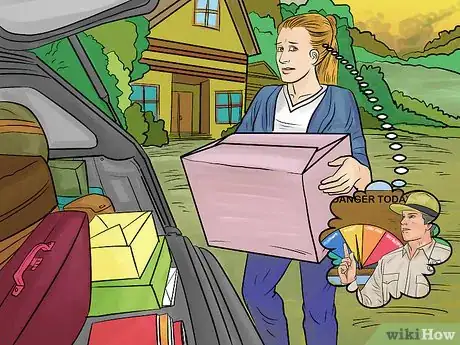


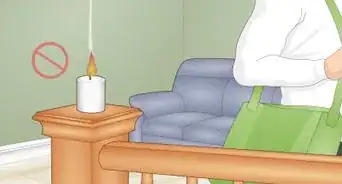

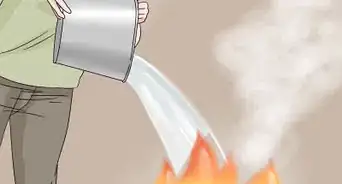



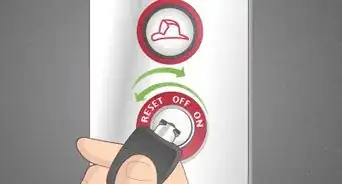
-Step-11-Version-2.webp)
